HTC U11 Plus review
The HTC U11 Plus is a new version of the HTC U11 with this season's must-have: an extended screen that barely leaves any surround cluttering up the front. And that is, for the most part, it.
However, a few millimetres added to the height of the HTC U11 Plus have enabled cramming-in a bigger battery to compensate for the larger screen. Plus a little extra for good measure.
If HTC's 2017 line-up never appealed, the HTC U11 Plus may not have anything new to awake your interest. And it arrives just before the Samsung Galaxy S9, which may well make some of its tech seem passé.
Those offered the HTC U11 Plus on a contract upgrade have nothing to fear, though. This is a top-quality phone with a high-quality camera, good display and smart design.
HTC U11 Plus price and availability
- Out now
- Costs £699 (around $970/AU$1,215)
The HTC U11 Plus arrived at the start of 2018, and is priced to roughly match the Samsung Galaxy S8 Plus. SIM-free you'll pay £699 in the UK, that's around $970/AU$1,215, but there's no plan to bring the phone to the US.
This is a top-end phone, the kind that deserves some research and thought before clicking the "checkout" button. However, it isn't quite as expensive as the iPhone X or Samsung Galaxy Note 8.
Key features
- High-end specs with a high-end price
- Matches top phones of 2017
- Single rear camera
The HTC U11 Plus is a well-spec'd phone, but not one that can claim to have it all. Next to its Samsung and LG rivals, a dual-lens rear camera is the obvious missing part.
It can't take the blurry-background photos that friends might call "arty" on Instagram and Facebook.
We're likely to see phones with Qualcomm's new Snapdragon 845 chipset just a few months after the HTC U11 Plus too, set to offer yet more power and improved efficiency.
The rest is largely in-place, though. The HTC U11 Plus has a very high-quality rear camera, if one that is a little slow to shoot, an extra-wide QHD screen and 128GB of storage.
HTC specials include punchy BoomSound speakers and Edge Sense, which lets you launch an app by squeezing the HTC U11 Plus's sides.
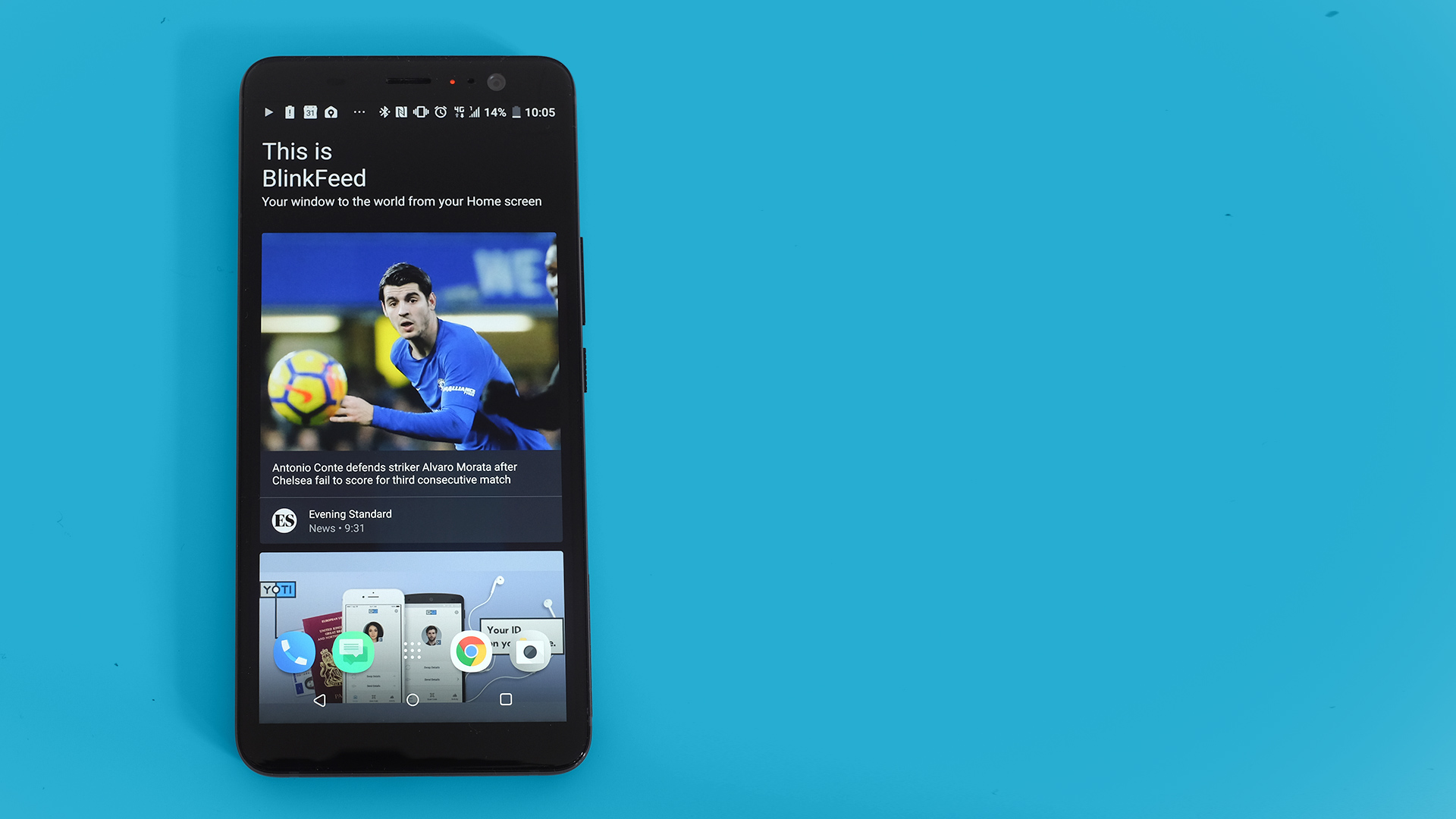
Design
- Gorilla Glass 5 and aluminium design
- Slim screen surround
- Rear fingerprint scanner
The HTC U11 Plus has the most popular, most common design style among current ultra-high-end phones. There's curved glass on the back, and a band of metal around its sides to join the front and rear glass panels.
Its look is less dynamic than the Samsung Galaxy S8 Plus, though, which has a curved front and even more aggressive cutting of the screen surround. Where it leaves virtually zero dead space to the left and right of the display, the HTC U11 Plus actually has slightly more than the cheaper Honor View 10.
As such, despite the newer display design, this phone is a little bigger and heavier than the HTC U11. Still, it's only as unwieldy as some of the last generation's 5.5-inch phones, even with a 6-inch screen.
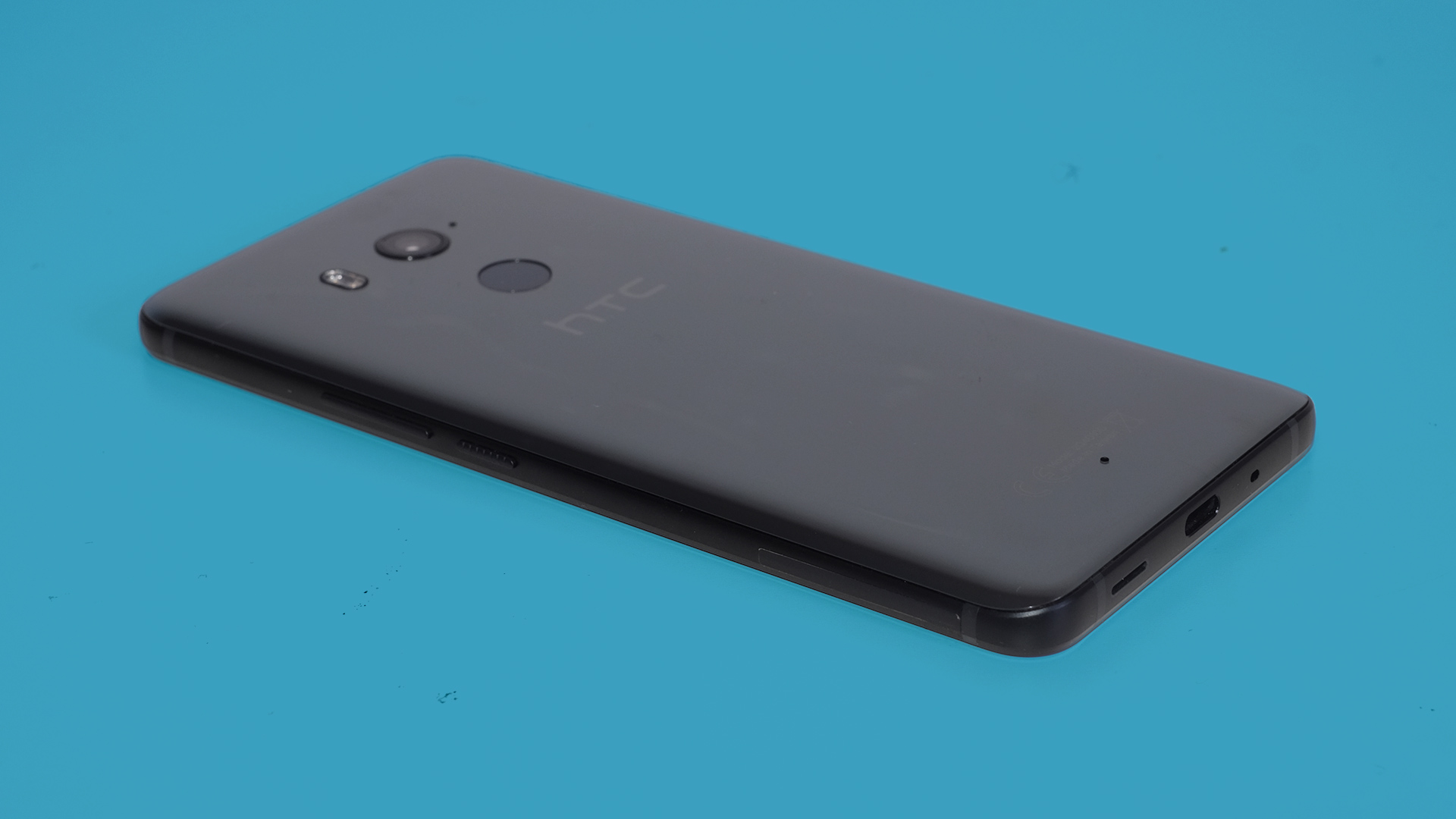
The curved rear glass also feels great. HTC has prioritised smooth contours over absolute thinness, as the HTC U11 Plus is relatively thick for such a pricey phone at 8.5mm. But it makes a pleasant change from all the abrupt flat-back phones. HTC calls it a "liquid surface".
This rear glass is highly reflective and comes in dark blue and the dark silvery grey we have here, although there's also word of a translucent model. The standard variants are mirror-like, rather than having a multi-layered finish that plays with light.
Like other recent high-end HTCs, the U11 Plus has the Edge Sense feature, letting you squeeze the phone to act as a shortcut gesture. As standard it launches the camera, probably the most useful option for many, but you can set it to fire up any app you like.
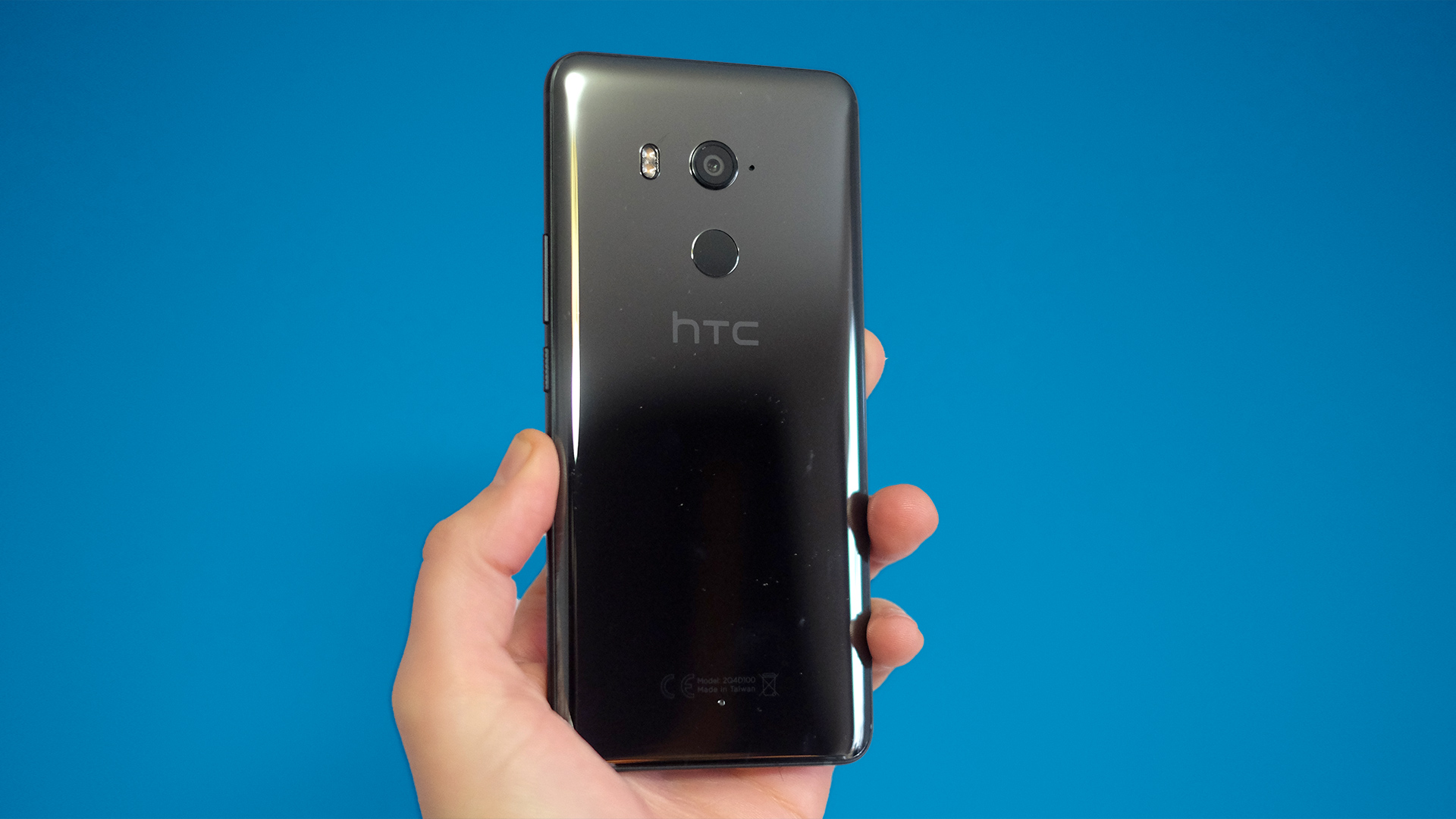
There's 128GB of storage, matching the Samsung Galaxy S8 Plus and LG V30. Unless you’re a media or games hoarder you won’t have to offload photos from the HTC U11 Plus for a long, long time.
The most contentious part of the HTC U11 Plus's hardware is its lack of a headphone jack.
You do get a pair of USB earphones in the box, and a 3.5mm jack adaptor, but if you have a beloved pair of wired headphones, you might want to consider the OnePlus 5T or Honor View 10, which are several hundred dollars/pounds cheaper and have a 3.5mm socket.
While there are no particularly cogent technical arguments for leaving out a headphone jack in a phone this large and 8.5mm thick, it probably does make water resistance easier to apply.
The HTC U11 Plus is rated at IP68, meaning it can be submerged in 1.5 metres of water for 30 minutes. IP67, the more common rating, limits the depth to 1 metre.
There's also a fingerprint scanner, sitting on the back, rather than the front as in the HTC U11. It's quick and reliable, and unlike the Samsung Galaxy S8, it does not sit in an awkward position.
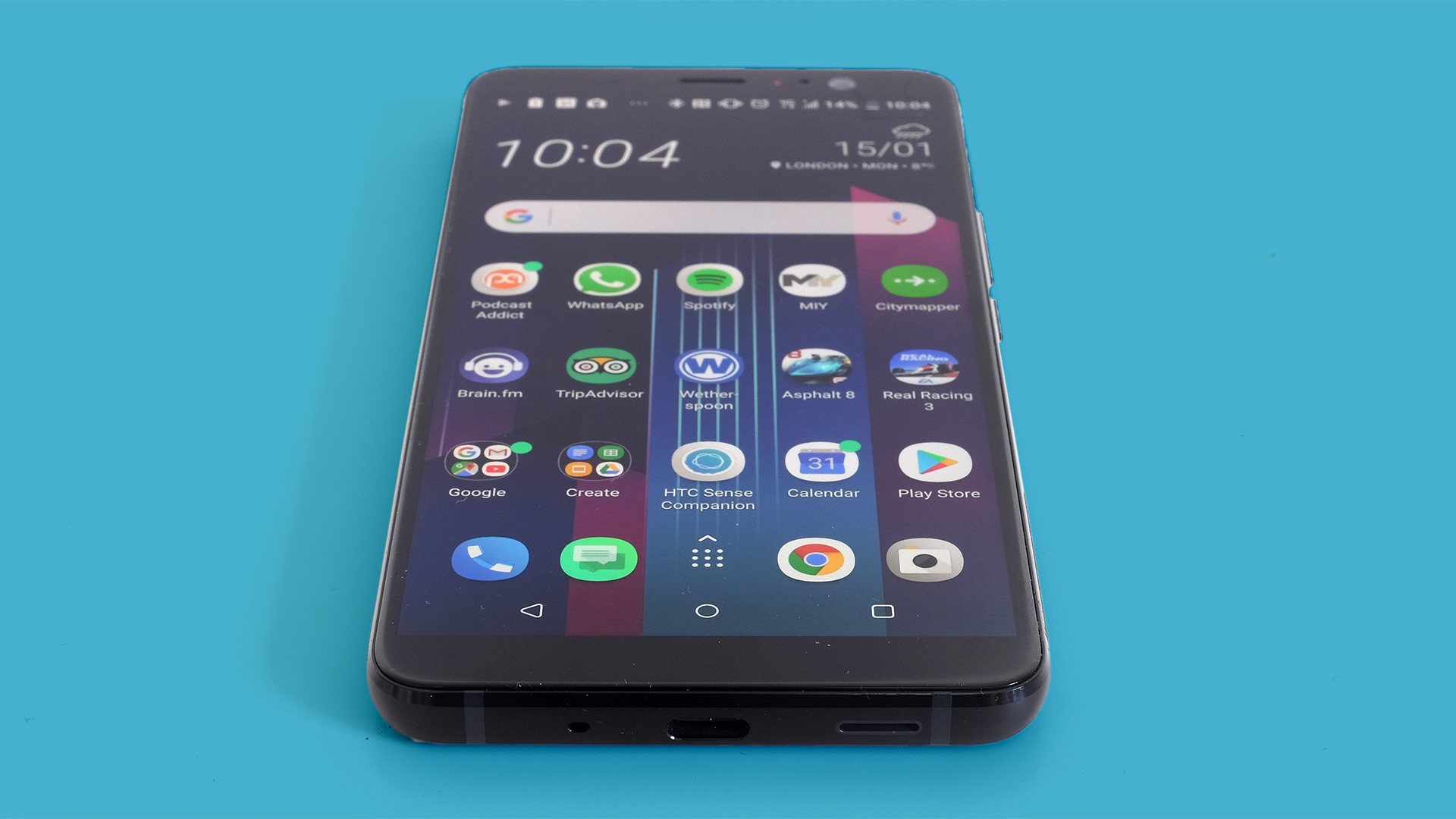
Screen
- 6-inch 1440 x 2880 Super LCD6 screen
- 'Cinema' colour
- Slightly limited max brightness
The HTC U11 Plus has a 6-inch 1440 x 2880 LCD screen. If you're not used to the resolutions of this new breed of 18:9 aspect phone, that's the equivalent of a 1440 x 2560 screen like the HTC U11's, with more vertical pixels to fill in the added space.
HTC calls the screen “Super LCD6”, a proprietary take on the IPS tech we see in most good non-OLED phones, tablets and laptops. Turn up the brightness and take the U11 Plus into a dark room and you'll see its black level isn't quite OLED standard.
However, its white tone is clean, and day-to-day you'll be hard-pressed to notice the contrast difference between this and an OLED. It's a phone, not a home cinema.
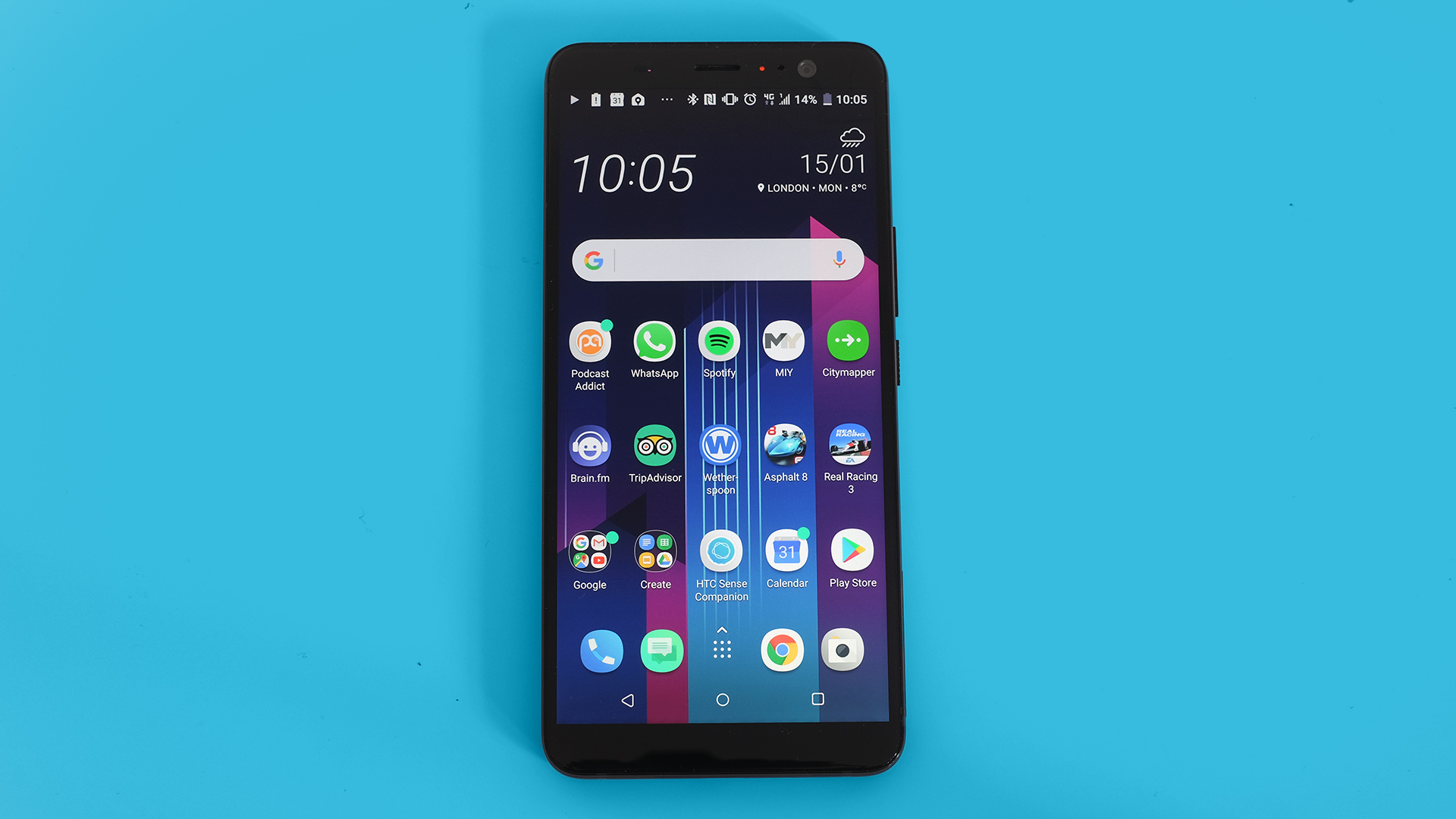
That said, HTC's big claim for the display is that it can fulfill the DCI-P3 color gamut. This is the range of colors used by the film industry, with much deeper tones than the sRGB standard monitors, phones and printers are traditionally measured against.
You can switch between the sRGB and DCI-P3 standards in the HTC U11 Plus's settings menu. And, sure enough, the DCI mode looks seriously saturated. The sRGB mode is on hand for those who like a more relaxed look, which we actually prefer here.
The one complaint: top brightness does not seem all that high compared with other high-end LCD phones. We didn't struggle to use the HTC U11 Plus outdoors, but we were reviewing from London. It's hardly the sunniest place on Earth, even on bright days.
Battery life
- Fair video playback performance
- Better real-world stamina
- Full day of heavy use, 1.5 days of light use
One of the so-so parts of the older HTC U11 is its battery. It isn't bad but can't keep up with the best of the flagships with which it competes.
HTC has improved things a little with the HTC U11 Plus. It has a 3,930mAh battery, which seems about right for the display size and resolution.
The phone also performs a little better in our standard 90-minute, max brightness video playback test. It took 22% off the HTC U11's battery, and 20% off our HTC U11 Plus.
It's an improvement, but not as good as most of the rivals. The Samsung Galaxy S8 Plus loses 11%, the OnePlus 5T 12%, the Honor View 10 15%.
Performance out in the real world doesn't quite display such a massive disparity, though. On a busy midweek day of use we found the HTC U11 Plus tended to have around 30-40% left by bedtime.
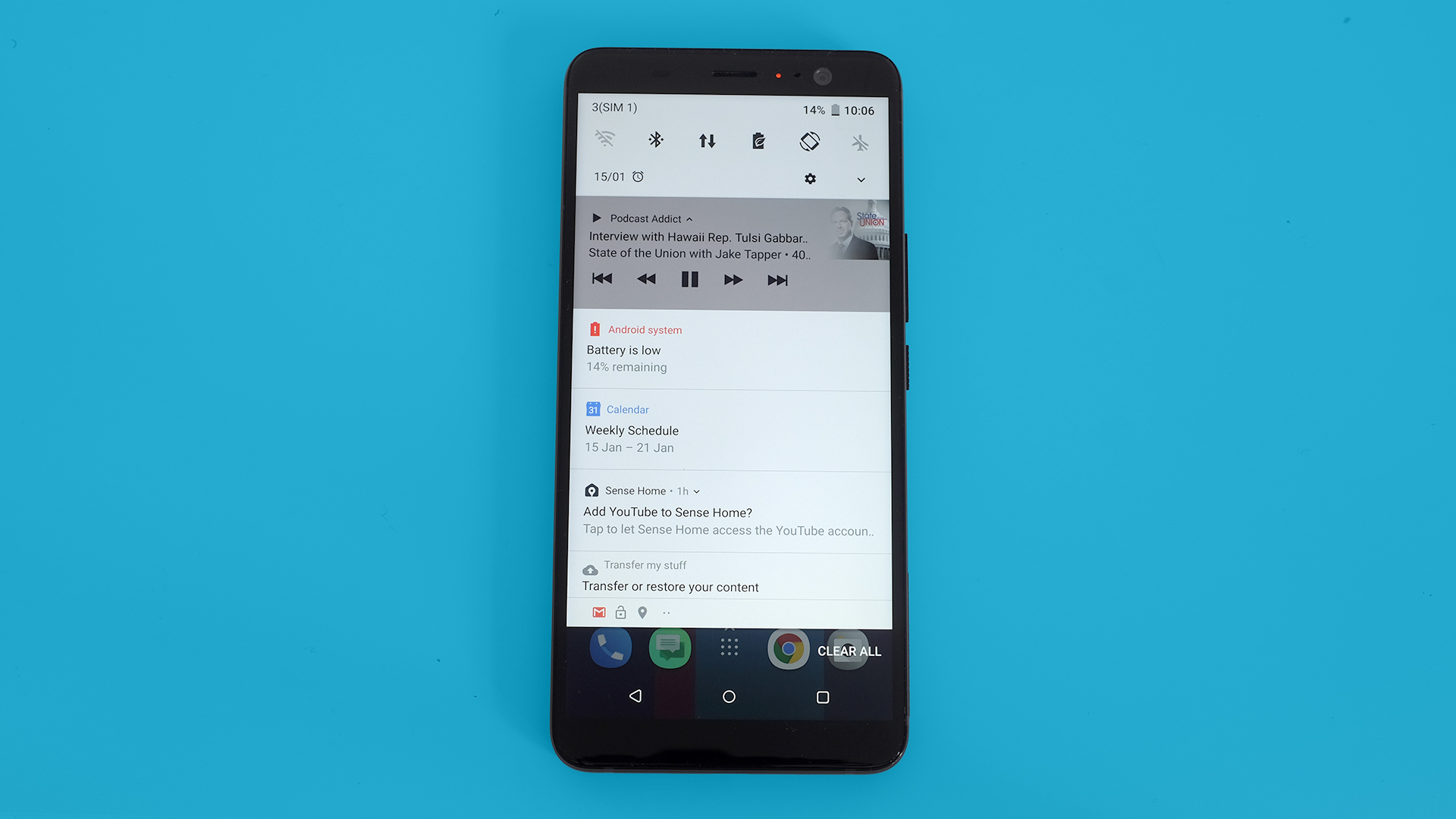
While the last wave of phones has seen some real improvements to actual stamina, we'd still class that as a commendable result. And on a less phone-packed Saturday, we found we could easily end up with 50% left by 11pm-midnight.
The HTC U11 Plus isn't the longest-lasting phone in its class. But it'll last through a solid day's use with a bit of change in the tank if you forget to plug it in overnight.
There are no particularly clever battery optimisations, though, just the usual ones. Some recent phones let you change the screen resolution to save some juice. The HTC U11 Plus doesn't.
Camera
- Excellent photo quality, including low light
- Suffers from shutter/processing lag
- No second rear camera for background blur or zoom
The HTC U11 Plus has a 12MP rear camera with a dual-LED flash and optical image stabilization (OIS). It's a reminder the best phone cameras use this resolution, even if there are sensors with 20 megapixels or more.
Images are sharp right down to pixel level, and daylight photos look superb. They're detailed, colorful, dynamic range is great and there's no evidence of HTC's historic problem with overexposure.
Night shots too are great, which is something you don't tend to get in most of the £400-500 alternatives. While low-light images are naturally noisier than day-lit ones, the amount of detail the HTC U11 Plus retains is excellent, and as the rear camera is stabilized getting sharp images is blissfully easy.
The HTC U11 Plus often makes very dark scenes look brighter than they appear to the naked eye, in order to bring out more detail. But it doesn't make them look too unnatural when doing so.
The HDR mode is also excellent. You can shoot a sunset, right into the sun itself, and the foreground won’t be entirely shadowy.

For pure image quality we have no complaints. And the hit rate you get with this phone is among the best, although colour temperature can vary a little between exposures.
The problem with the HTC U11 Plus's camera is shooting performance. There's half a second shutter lag between hitting the button and the exposure. It feels much slower than a phone camera this expensive should.
This lag gets worse in low light. We hope this will improve with a further software update, but we had the same issue with the HTC U11, and that wasn't exactly yesterday.
There's the simplicity of the camera to consider too. There's just the one sensor on the back, so you don’t get shallow depth of field effects or lossless zooming.
Still, the Samsung Galaxy S8 Plus has the same single-camera approach. And if your stand-out feature is image quality, you're on the right track.
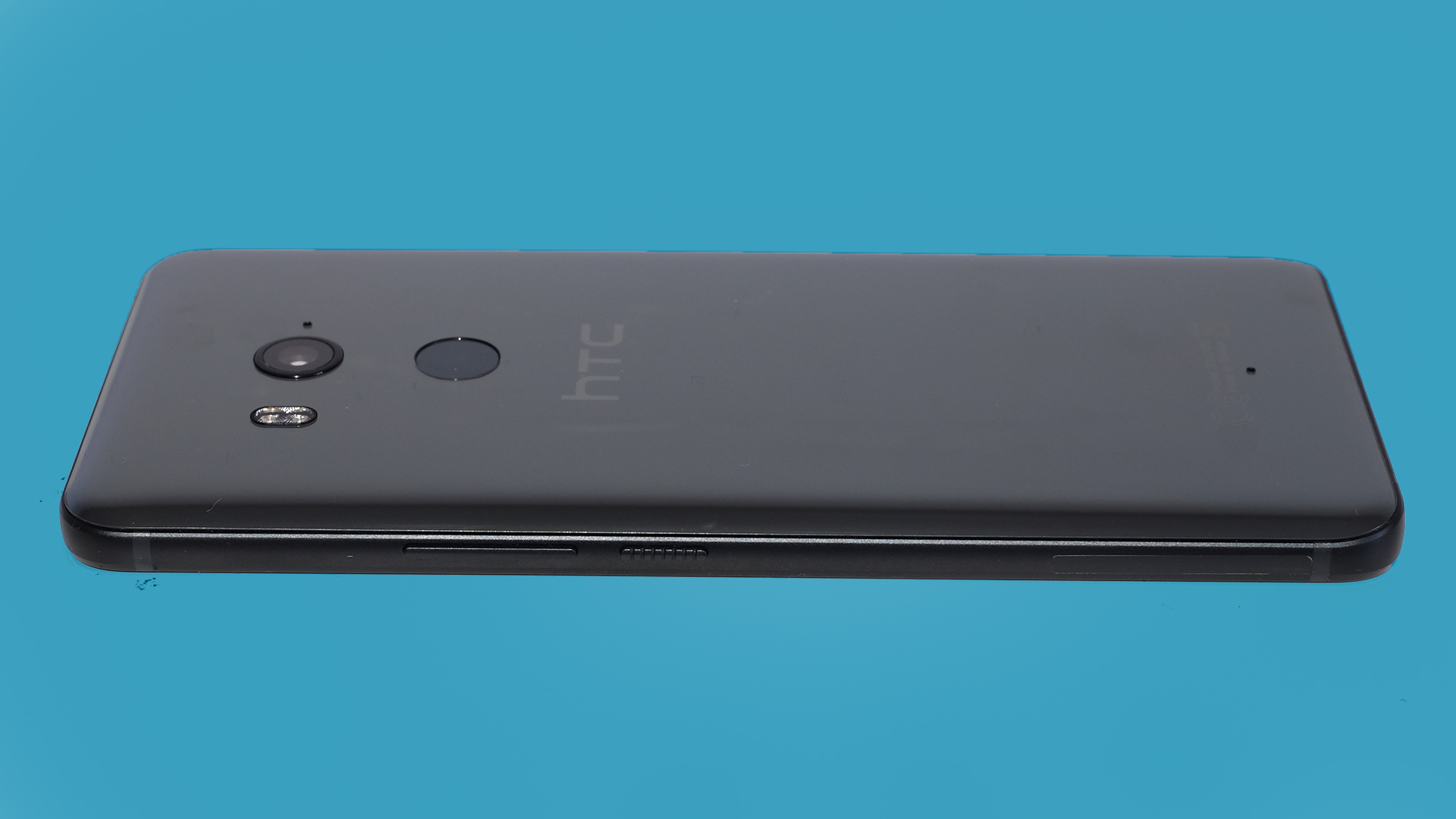
You can also shoot video at up to 4K at 30fps or 1080p at 60fps, and there are some neat audio tricks. Multiple mics let you record "3D" audio. Listening through a pair of headphones, the positional effect is great considering this is a phone not a field recorder, and so is general audio recording quality.
Judging by our experience with the HTC 11, it'll even do the trick for loud rock gigs.
The front camera has an 8MP sensor, down from a 16MP one in the HTC U11. That sounds like a huge downgrade, but the HTC U11 Plus’ selfies are actually great.
They resolve fine details like facial hairs better than some 13MP selfie cameras, and as the camera isn’t overburdened with megapixels (which with lower sensor surface area tends to cause poorer low light performance) you don't lose this when shooting indoors either.
Camera samples
Interface
- Android 8.0
- Custom HTC software
- Highly tweakable software, includes themes
The HTC U11 Plus runs Android 8.0 with HTC's Sense interface. This time around, HTC has preserved the core feel of simple Android almost completely, even while packing-in plenty of extras.
You flick up from the home screen to bring up the apps menu, like a Pixel 2 XL. There's a degree of inertia to the way the system moves, like a Pixel. And in the notifications drop-down icons slide fluidly from the bottom of the screen, opening up to full notifications, as you scroll.
This doesn't look like a vanilla Android, and it isn't one. But HTC hasn't messed too much with the rhythm of Google's own Pixel interface. That's a good thing.
HTC being HTC, though, there are some add-ons. BlinkFeed is back once more. As ever, it's a rolling newsfeed that takes up a home screen, using News Republic as its source for content.

Fresh out of the box it'll populate the feed with local (to your country) sources. In the UK that means plenty of trashy new stories from tabloid newspapers. You can choose what ends up in BlinkFeed, though, adding different topics, or updates from Facebook and Twitter.
You can also disable BlinkFeed completely, which we'd probably end up doing after a while. Sorry, HTC.
HTC Sense also allows for customisation of the apps menu. Icons can be arranged alphabetically, by date or by most recently used. And you can tweak the grid to make the icons more spaced out.
You get none of this in vanilla Android.
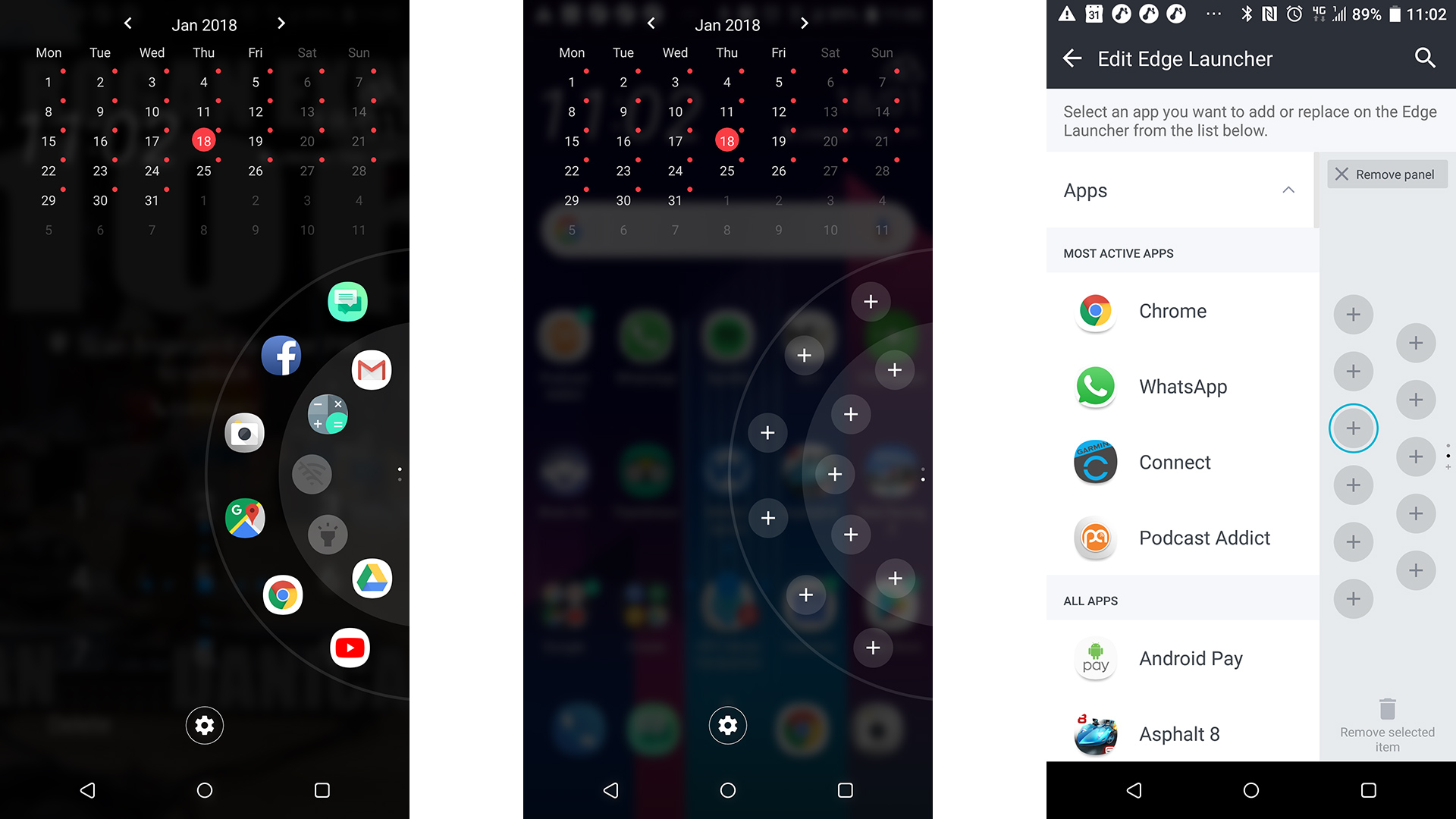
Then there's Edge Sense. This is one of the more advanced applications for the HTC U11 Plus' squeezable sides. Instead of launching an app it brings up a carousel of app shortcuts, and shows a monthly calendar view.
It does seem a little like clutching at ways to make the edge-squeeze gesture seem more useful, though, and we'd rather use it to launch a favorite app.
The HTC U11 Plus is also more obsessed with digital assistants than just about any other phone. Long-press the home soft key and you get Google Assistant. Run HTC Alexa and you get Amazon Alexa access.
There's also HTC Sense Companion, which offers digital post-its based on your location. Next to Assistant and Alexa it seems basic, and we can't imagine many using it much.
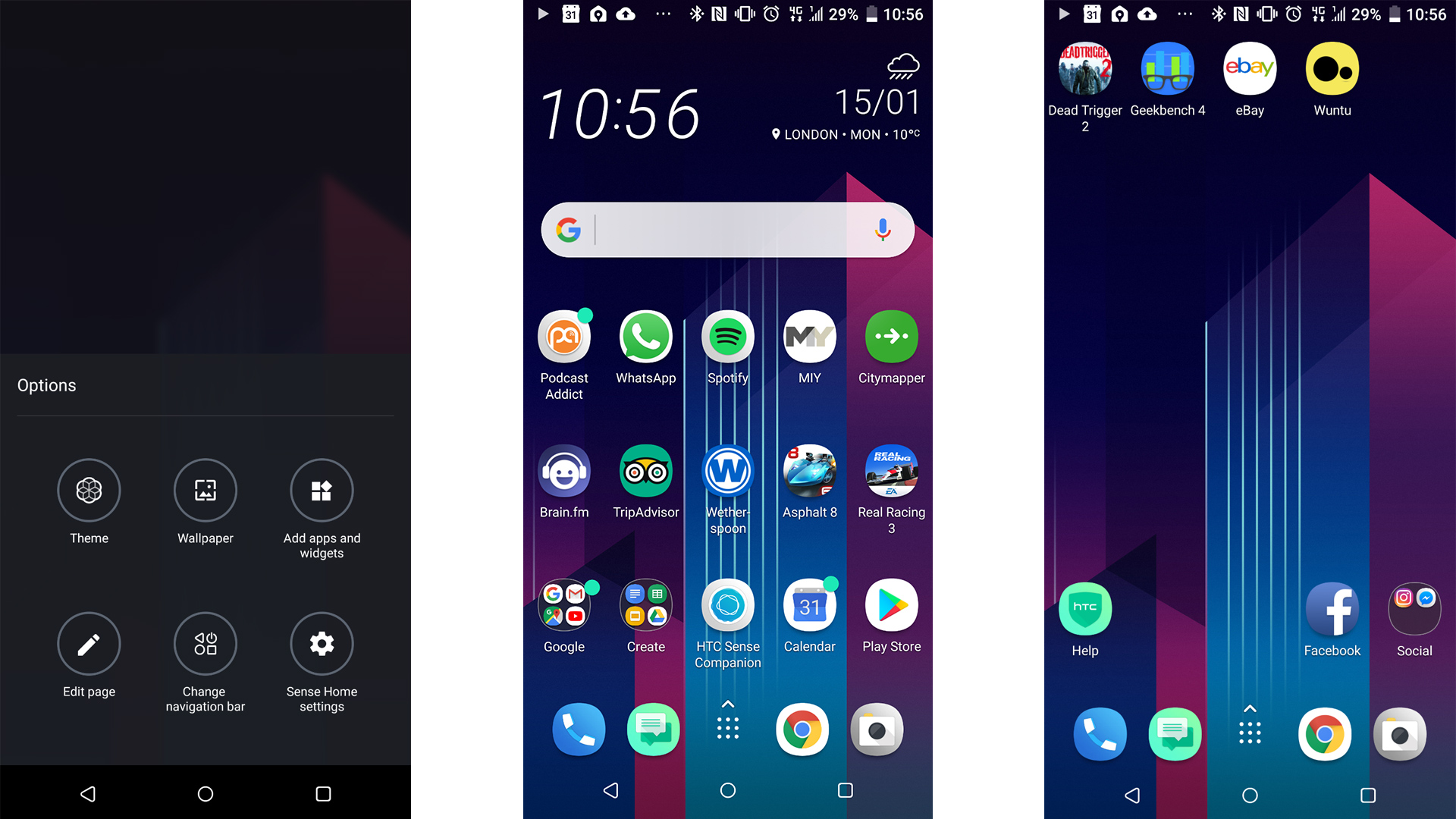
Finally, like older versions of Sense, there are themes. These alter wallpapers, fonts and icons. HTC offers its own icon packs too, which let you switch back to the company's old icon style: a tip of the hat to hardcore fans.
The HTC U11 Plus' interface is more complicated, busier, than some, but also offers customization not present in the latest version of Android. It runs well too.
Movies, music and gaming
- Widescreen aspect works for games and films alike
- Loud speaker, but gets a little harsh maxed-out
- No headphone jack
One neat side effect of the new 18:9 aspect screen is the extra space it provides for gamepad-style touchscreen controls in games. Your thumbs infringe on the action less. However, this is a work-in-progress as not all games support 18:9 so far.
Asphalt 8 does, and while many people play this Gameloft racer with tilt control, using your thumbs feels better than ever. Dead Trigger 2, however, continues to run in 16:9, leaving a blank black area to the right of the display.
It's still relatively early days for 18:9 phones, though, and with so many new phones adopting this style, it won't be long until support is in by default.
As you'd hope for a phone at this level, games run very well, with no obvious frame rate drops.
The 18:9 screen works well for movies too, a comfortable middle-ground between "TV style" 16:9 and cinema 21:9. Solid display contrast and great color help as well.
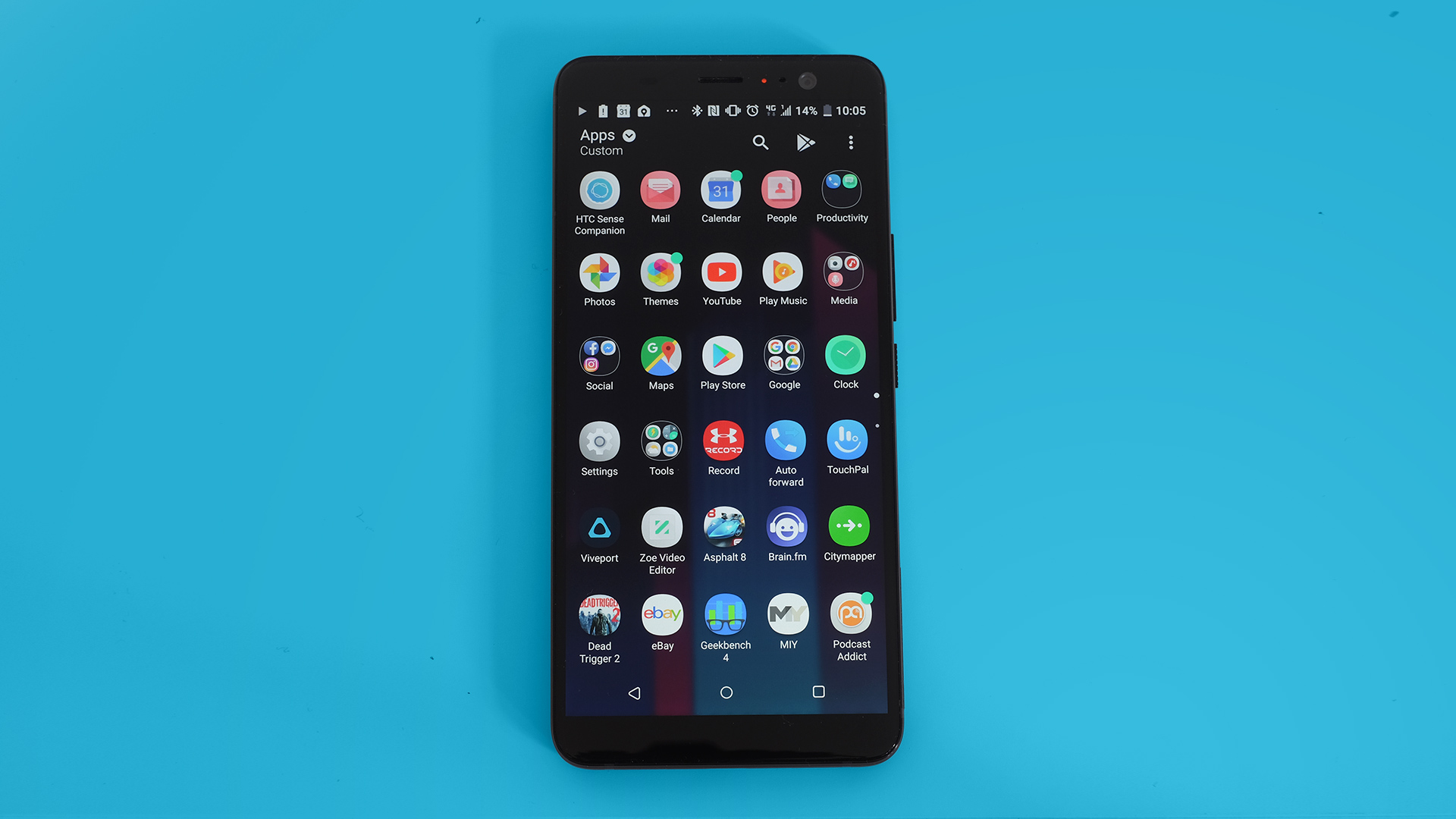
There are also the speakers to consider. The HTC U11 Plus has BoomSound speakers, which in this case means there's a driver on the bottom, and the call speaker joins in to make sure the sound isn't just coming from the bottom edge.
Volume is slightly better than most rivals, but when maxed-out the front driver starts to sound harsh, which does the general sound quality no favors. The Razer Phone has significantly better speakers, but the HTC U11 Plus' are still good.
There are two BoomSound modes too. "Theatre" maximizes bass, while "music" tightens it up for a cleaner sound.
Rather use headphones? You'll either need to use a wireless pair or use a USB adapter, as there's no headphone jack. However, if you're already on-board with Bluetooth headphones the HTC U11 Plus has good streaming cred, with support for aptX HD as well as standard aptX.
Benchmarks
- Classic Snapdragon 835 performance
- Scores 6,710 in Geekbench 4
The HTC U11 Plus has a Snapdragon 835 like several of 2017's flagships, including some variants of the Samsung Galaxy S8 Plus, the HTC U11 and LG V30.
This is an octa-core chipset with Kryo cores, the fastest four of which are clocked at 2.45GHz.
In Geekbench 4 the HTC U11 Plus scores 6,710 points, roughly matching the OnePlus 5T and Samsung Galaxy S8. They use the same CPU, so this makes sense.
This is one of the most powerful phones around, but it won’t be for long.
Verdict
The HTC U11 Plus is a great phone likely to be rapidly eclipsed as 2018's new models appear. Its tech is really that of a 2017 phone, which makes sense given this is primarily a design update of last year's HTC U11.
Unless you're desperate for lossless camera zooming or shallow depth of field photos, though, this doesn't really matter.
Having used the phone for a while the one bit we'd really like to change, or get rid of to be more precise, is the camera’s shutter lag.
Who's this for?
The HTC U11 Plus is for people who don’t want an iPhone and don’t want a Samsung. That’s the core of it, because we find it hard to believe many really consider the phone’s squeezable sides a convincing reason to justify a £700 buy.
Should you buy it?
The HTC U11 Plus’s timing is bad. At the time of the phone’s launch, we’d be seriously tempted to see what Samsung has coming up in February (hint: it’ll be another top-end phone).
But if you’re not obsessed with having the latest tech as it appears, there are few reasons to hesitate. As long as you don’t mind the missing headphone jack, anyway.
The HTC U11 Plus is a strong phone, but here are three similarly strong alternatives.
Samsung Galaxy S8 Plus
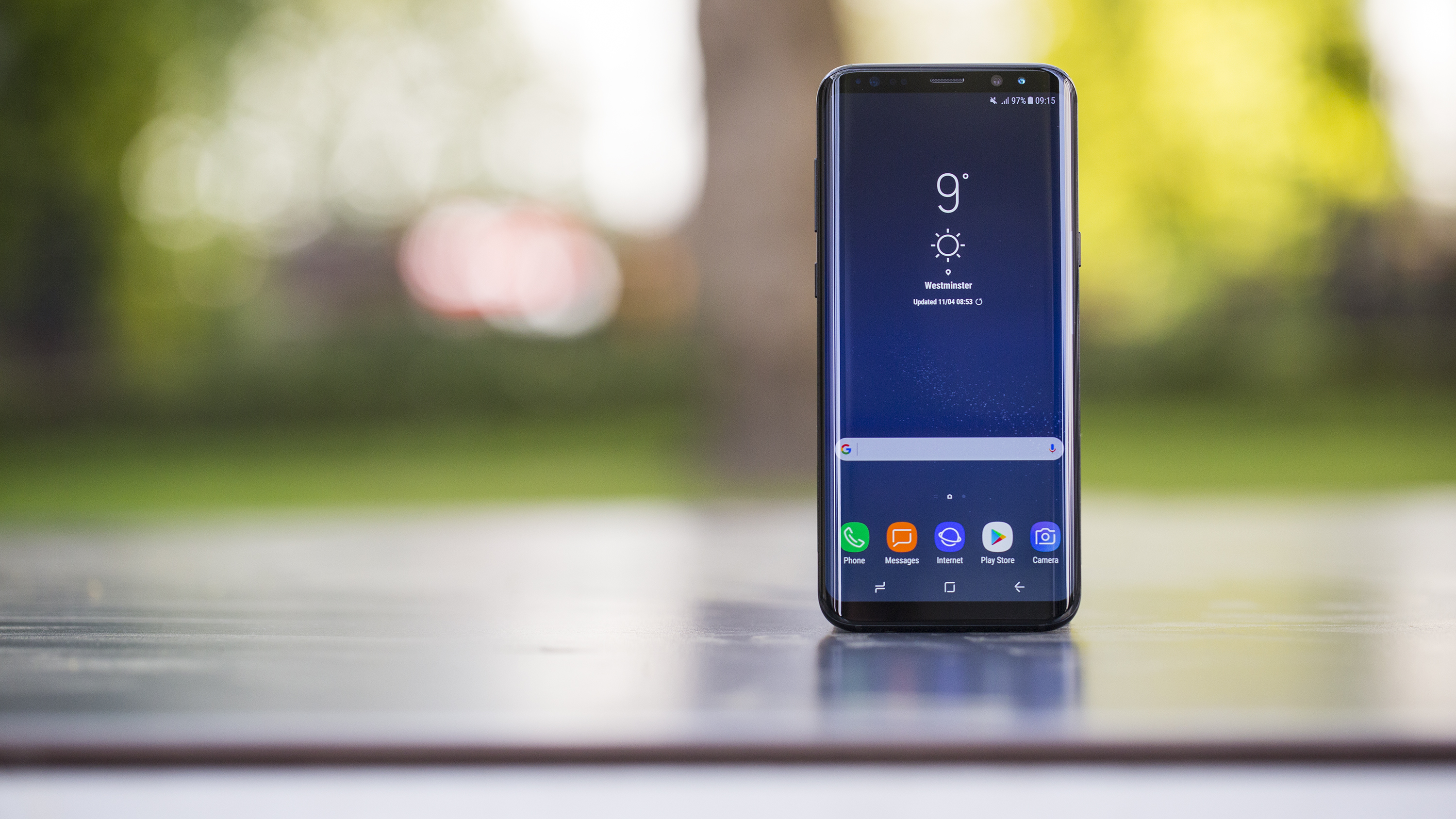
Samsung, king of Androids, makes the HTC U11 Plus’s clearest rival. And it arrived the best part of a year earlier.
The S8 Plus is as powerful, has a similar-but-faster camera and a more dynamic design that fits an even larger screen into the same footprint. With incoming price cuts for this established phone likely, it’s very tempting.
- Read our full Samsung Galaxy S8 Plus review
LG V30
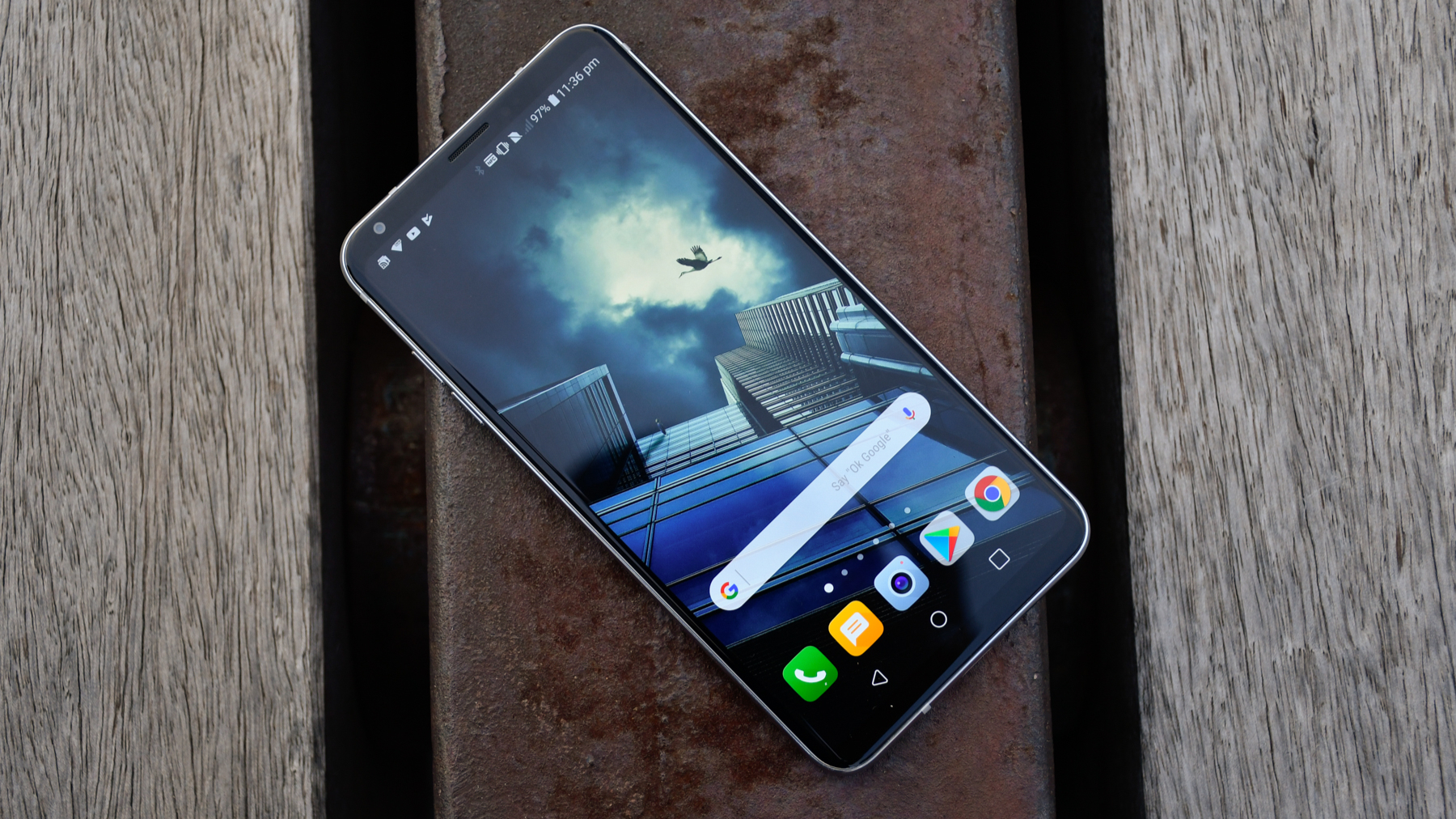
LG’s latest top-end phone is not another in the “G” series but the V30. It shares several specs with the HTC U11 Plus, including chipset and screen size. The LG has a dual-lens rear camera, but from our testing the HTC pips the V30 for image quality.
- Read our full LG V30 review
OnePlus 5T
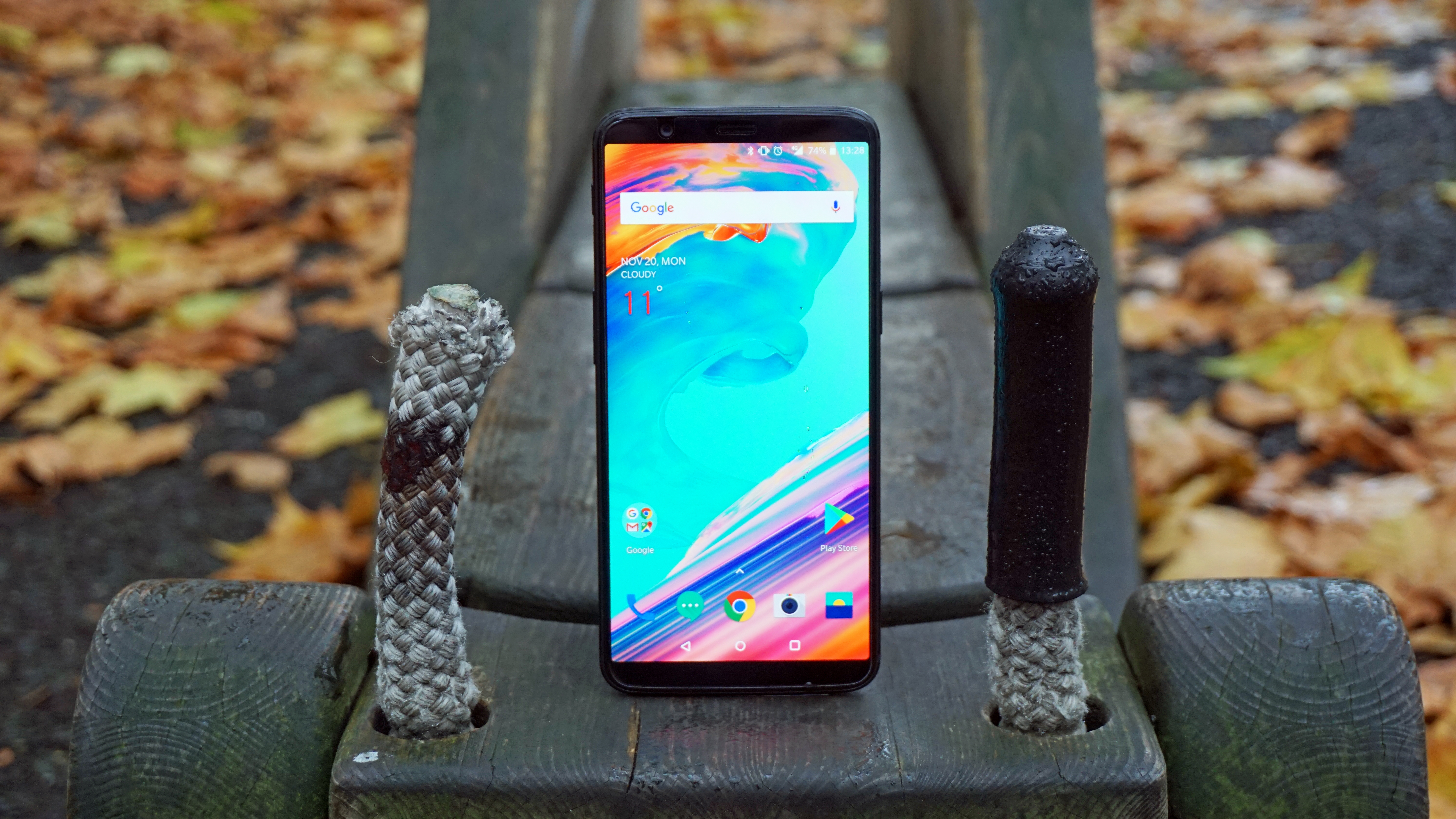
If you want to save hundreds, look to the OnePlus 5T instead. It has the same CPU and there’s a 128GB storage option as well.
Photos taken at night may not be quite as clear, screen resolution is much lower and the casing is metal rather than glass, but considering the price, we’d think carefully about this one.
- Read our full OnePlus 5T review
First reviewed: January 2018
0 comments:
Post a Comment